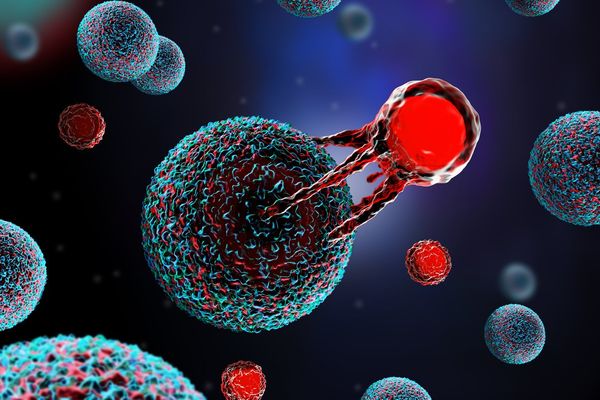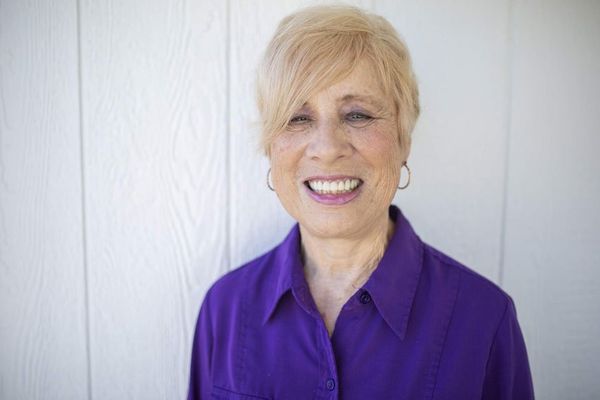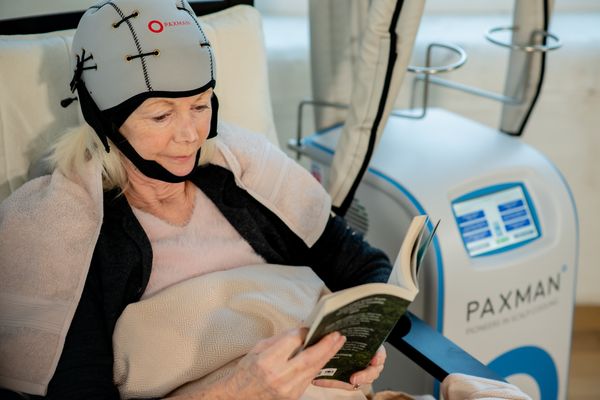What happens next? That might be the first thing that comes to mind if you or someone you love is one of the nearly 20,000 women in the U.S. diagnosed with ovarian cancer each year.
Navigating an ovarian cancer diagnosis can feel overwhelming, especially when it comes to treatment options. And while it goes without saying that every case is different, it’s important to talk with your healthcare provider (HCP) to find the best plan for you.
In the meantime, here’s what you need to know about treatments for ovarian cancer.
What is ovarian cancer?
Ovarian cancer affects either one or both of the ovaries, fallopian tubes or the peritoneum, which is the lining of the inside of your abdominal cavity.
What are the types of ovarian cancer?
There are a number of types — and subtypes — of ovarian cancer. The most common is epithelial ovarian cancer/carcinoma (EOC), which makes up about 9 out of 10 ovarian cancer cases. Serous epithelial ovarian carcinoma is the most common subtype.
Most treatment options focus on EOC since it makes up the most cases. (Other types, such as stromal and germ cell ovarian cancer, account for less than 3% of cases together.)
How do you treat ovarian cancer?
Treatment plans for ovarian cancer are different for each person. Options vary based on the type and stage (the size of the tumor and how far the cancer has spread from the ovary) and your overall health.
Common ovarian cancer treatment options include:
Surgery
Surgery is performed to remove the tumor and to find out the stage of the cancer. Often, surgery for EOC is a hysterectomy that removes the uterus, fallopian tubes and ovaries, along with some pelvic and abdominal lymph nodes and the omentum (that’s a fat pad that drapes over part of the abdomen). Fluid and other tissue might also be taken out to be tested. If the cancer is at a more advanced stage, the surgery may be more extensive.
Chemotherapy and Radiation
The goal of chemotherapy? Destroying any microscopic cancer cells — think of them as tiny grains of sand — that might be present. Chemotherapy is a systemic treatment, which means it affects your entire body. On the other hand, local treatment options such as radiation target a specific area.
Targeted drug therapy
Targeted therapy uses drugs to attack the parts of cancer cells that make them different from normal, healthy cells. One example: PARP inhibitors, which can help improve progression-free survival — that’s basically when the disease is still in the body but it does not get worse. Targeted drug therapy is determined by factors such as the stage of the cancer and if you have BRCA1 and/or BRCA2 gene mutations.
Clinical Trials
Clinical trials are an opportunity to try new treatments, depending on your specific case. Bonus: Clinical trials are important for cancer research overall.
Who makes up the treatment team for ovarian cancer?
Many of the important things in life take a village, and that applies to treating ovarian cancer also. The team of HCPs can include:
- Gynecologic oncologist: A gynecologist who specializes in cancer care in female reproductive organs. They can perform surgery as well as prescribe chemotherapy and/or other treatments. Research suggests that seeing a gynecologic oncologist can help you get better surgical and overall outcomes.
- Medical oncologist: A doctor who treats cancer with medicine, including chemotherapy and targeted therapy.
- Radiation oncologists: Doctors who provide targeted radiation treatment.
- Nurse Practitioners/Physician Assistants and Nurses: Healthcare providers involved in all aspects of care, including after surgery.
- Geneticist/Genetic counselor: A geneticist is an HCP who tests for genetic mutations, such as in the BRCA1 and BRCA2 genes, provides a diagnosis and decides on personalized therapies to treat the genetic condition. A genetic counselor provides counseling and education on test results and helps people cope with their diagnosis.
- Oncology social workers: Help navigate the non-medical aspects of treatment like taking advantage of support services, such as counseling and support groups. They can also help with emotional and mental health.
- Patient navigators/patient advocates: Help support you through your treatment. They can help you communicate with your care team, make appointments and deal with your insurance company. They can also help connect you to social, financial and legal support.
- Dieticians: Help you figure out what to eat and how to get the nutrition you need throughout treatment.
- Caregivers: May be professional or a family member or friend. They can help offer emotional, physical and practical support throughout the process.
- Palliative care team: A care team including doctors, nurses, social workers and spiritual advisors who specialize in improving how happy and comfortable you are while you’re going through treatment.
What are ovarian cancer survival rates?
If you’re wondering if ovarian cancer is curable, know this: Like many other cancers, the earlier it’s diagnosed, the better. When ovarian cancer is found early, the five-year survival rate is 94%, meaning that 94 out of 100 people are still alive five years later.
The downside is that ovarian cancer is hard to diagnose because basic screening tests rarely catch tumors in early stages. Also, common ovarian cancer symptoms such as bloating and pelvic pain are easy to dismiss. Often, by the time the cancer is caught, it’s at a more advanced stage. One way to help catch ovarian cancer early is to know your family history and keep a close eye on any symptoms.
Resources
National Ovarian Cancer Coalition
Tell Every Amazing Lady About Ovarian Cancer (T.E.A.L)
Centers for Disease Control and Prevention
Ovarian Cancer Research Alliance
This resource was created with support from Merck.
- Too Many Women Die From Ovarian Cancer. Valerie Palmieri Is on a Mission to Change That. ›
- Ovarian Cancer Is Not a Death Sentence ›
- Ovarian Cancer ›
- Ovarian Cancer: Know the Symptoms and Risk Factors ›
- Living with Ovarian Cancer Was Tough, But the Lessons I Learned Led to Lasting Joy and Clarity - HealthyWomen ›
- Ask the Expert: Ovarian Cancer - HealthyWomen ›
- Facts About Gynecologic Cancer - HealthyWomen ›
- Signs and Symptoms of Ovarian Cancer - HealthyWomen ›
- Señales y síntomas del cáncer ovárico - HealthyWomen ›
- What to Do If You’ve Just Been Diagnosed with Ovarian Cancer - HealthyWomen ›
- Qué hacer si te acaban de diagnosticar cáncer ovárico - HealthyWomen ›
- CAR T Cell Therapy 101 - HealthyWomen ›







